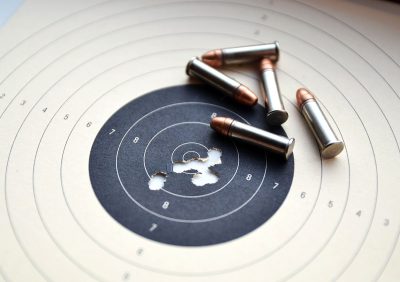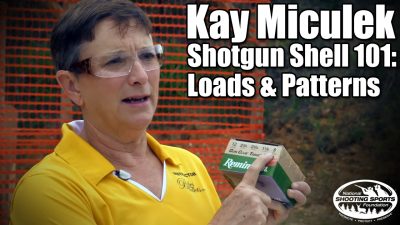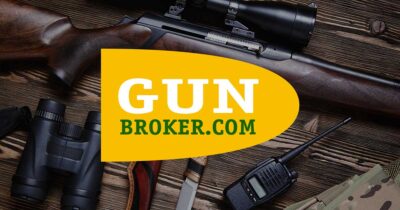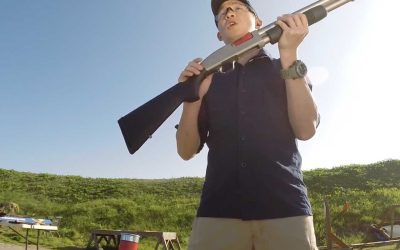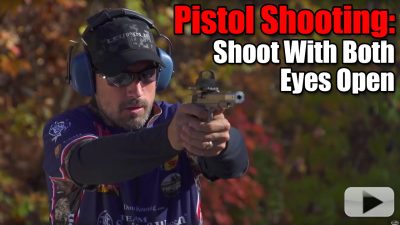Firearm Fundamentals: How to Shoot a Shotgun Safely & Correctly
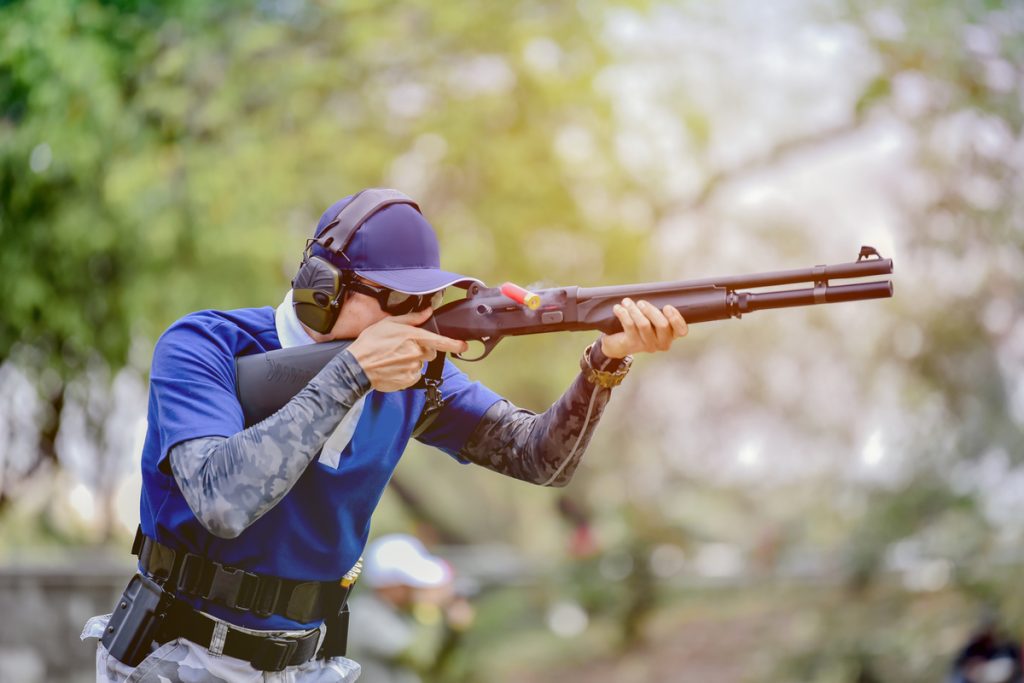
There are few guns that are as enjoyable and misunderstood as the venerable shotgun. This great gun as we know it has been around since 1878 and has served as a hunting weapon, personal protection tool as well as an enjoyable range companion for over 140 years. Once a very common weapon to be found in any shooter’s safe, the shotgun has begun to lose a little popularity as the modern AR15 has jumped into the spotlight. One thing that is lost in this transition is an understanding of how to safely and effectively shoot this great gun. While not overly complicated, there is a method connected to the shotgun that allows us to enjoy it, be accurate and safe while not suffering from recoil fatigue. As a public service we are going to share with you the fundamentals of how to shoot a shotgun safely and correctly.
While there are a wide variety of shotgun designs, the fundamentals are the same. As with all guns, safety is our number one focus. A recklessly handled firearm can lead to tragedy. With that in mind, let’s look at the core four firearms safety rules.
- Treat all guns as if they are loaded. On a busy range day or even a stressful day at work it can be difficult to remember that there still may be a round in the chamber. This is especially true for those picking up a gun they did not load and does not belong to them. If you assume the gun is always loaded, there will be no unfortunate surprises.
- Never point the gun at anything you are not willing to destroy. If the muzzle is pointed at anything that is of value, be it a human, a pet, a body part, or an inanimate object, it will cause death, damage, or great bodily harm if the gun were to be discharged.
- Keep your finger off the trigger until you are pointed in on target. You reduce your chances of accidentally firing a gun if your finger is not on the trigger. Make sure that you only place your finger on the trigger once you have selected your target and decided you are ready to fire.
- Be sure of your target and what is beyond it. The first part refers to the target. The second is the area behind and beyond the target. If there is not a proper backstop or clear area behind the target, the bullet can miss, or pass through the target and cause damage in unintended areas and to bystanders.
The biggest challenge we face with this great gun is recoil. The firearms world is full of people who have had a bad experience with shotguns simply because they did not use solid fundamentals and in turn, bore the brunt of poor recoil management. The biggest downside to this is that the shotgun gets a bad and undeserved reputation. Bring up shotguns in a conversation and there is almost always a story about an uncle who thought it would be funny to saddle you with a 12 gauge loaded with an absurdly powerful load and let you get punched in the shoulder as the gun fired. While some find this humorous it is very detrimental to the firearms world. Many of those same people who suffered the joke will never pick up a shotgun again. My hope is that after reading this you will feel more confident in handling the gun.
As with all firearms, the base that we shoot from is important so let’s look at grip and stance. Grip the shotgun with your strong hand just behind the action along the grip area. The support side hand should settle in on the foregrip about halfway down the gun. If it is a pump shotgun, then simply grip the pump action forward grip. On semi-auto guns, find a comfortable stock that allows you good control without reaching out too far. Seating the shotgun on the pocket of your shoulder is critical to enjoyable shooting. To do this, lift your strong side elbow forming a “chicken wing.” Now seat the shotgun into the pocket that is formed there. Press it deep and firmly into that pocket. Once the gun is seated you can relax your elbow and let it settle against your side. Now is a good time to talk about length of pull (LOP). This is essentially how long the butt stock is on the gun. For many people standard shotgun stocks are too long and they end up shooting the gun while being forced off angle to the target. The installation of something like a Houge aftermarket shorter LOP stock can make a huge difference in your shooting experience. Once the gun is seated, get a good cheek weld on the shotgun stock.
Stance is equally as important. Keep your feet shoulder width apart with slightly bent knees. I would recommend squaring up with the target and leaning forward a little to mitigate recoil. Do your best to stay square to the target as angling away from it will only slow your ability to get follow up shots quickly. As you begin to shoot, you will be able to find just how much you need to lean forward at the hips. We never want to overdo it, but we can use this position to help mitigate recoil.
For pump style shotguns the firing method is as follows. Acquire your site(s) depending on what system you are using. Using the front hand as well as the rear hand, spear the gun back into your body. We do not want any air or space between us and the gun. Relax your hips and smoothly press the trigger. The gun will fire and generate recoil. Once you are back on target, pump the foregrip back to the rear with a firm hand and then push it forward until it stops. A firm racking action is critical to avoid any misfeeds and to keep you in the fight. With practice you will be able to cycle the gun during recoil which greatly reduces the time needed to get you a follow up shot. Once again, keep the shotgun firmly seated into your shoulder. If we allow space, the shotgun will essentially punch you in the shoulder each time you fire it. Mix this with an often seen inappropriate LOP and bruising becomes part of your range session.
For semi-auto guns it is important to stay behind the gun and give it a good base to cycle from. If we move back a lot during the shot, we run the chance of bleeding too much energy out of the cycling action and actually cause a malfunction. The cycle requires a firm backstop in order to progress correctly. Firing wise, the action is fairly straight forward. Acquire your sights as we did with the pump gun and smoothly press the trigger. The gun will fire and in turn generate recoil. The difference is that the recoil will actually cycle the gun and end up chambering the next round. These guns can be run very quickly especially if you have a good stance to work from.
Stance wise it is important to not let the gun push you around. While recoil is a very real thing, it does not generate enough recoil to push people around unless your stance and grip are bad. After some time shooting you will find the balance that allows you to shoot quickly and with no major discomfort. One thing that will change your felt recoil is the ammunition that you use. For the most part I encourage new shooters to stick with bird shot. This is a light recoil round that launches a shell of very small shot. It is affordable and allows you to get accustomed to running your gun with minimal recoil and damage to your bank account. Next up is buckshot. This is the preferred round for self-defense as well as hunting. These rounds tend to generate a little more recoil, but modern manufacturing techniques and design have allowed for the development of “low-recoil” rounds. These are shells that generate less felt recoil than other rounds in their class. I am a fan of these rounds and use them quite often. The last round we will see is the slug. This is essentially the “bullet” version of a shotgun round. A slug is one solid projectile, rather than smaller projectiles, such as birdshot or buckshot. When a slug is fired from a shotgun, one larger solid projectile is fired, making it similar to a rifle firing a bullet. A shotgun firing a slug can be viewed as a simple rifle. These rounds tend to generate the most recoil because of the mass of the slug being launched downrange. Like the buckshot, there are low recoil versions of slugs as well in the marketplace. While slugs can serve a purpose, there is no need to spend extensive time running these once you have the fundamentals down. I mix in a box or two each training session but that is all.
Aiming a shotgun can be a bit different because of the sights we find on these guns. One myth we need to dispel is that you don’t really need to aim a shotgun. You just point it in a general direction and pull the trigger. The idea is that the shot pattern will be so wide and powerful that it will hit anything downrange. This just simply isn’t the truth. The shot group leaving the gun will be packed very densely initially then spread open more as it flies away from the barrel. I have seen people miss targets at 5 yards using a shotgun, so aiming is essential. A common site we see on shotguns is a bead site on the front and nothing on the rear. With this set up, your eye becomes the rear sight. We just look down the top of the action and barrel to align with the front sight or bead. Some newer tactical style shotguns utilize a ghost ring site where the front sight is acquired by looking though a peep hole rear site. These are very effective sites for shotguns, and I recommend them. Lastly, we have optics as an option now. Running a red dot on a shotgun is fast and very accurate and something to consider.
The key to mastering the shotgun is practice and exposure. Doing “dry” practice drills such as practicing running the pump action are a good way to develop good muscle memory and trigger control. It is also the best way to develop the habit of keeping the gun set against your shoulder. Once you get these core pieces to be part of your shooting process you will not have any issue at all running the shotgun.
The shotgun is a versatile and enjoyable weapon with a long and distinguished history. If you are a serious shooter or new to firearms, I encourage you to embrace the shotgun. With a little practice it will quickly become one of your favorite platforms!



